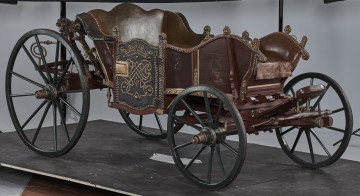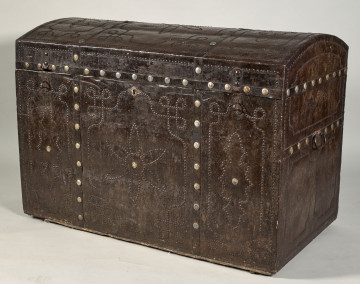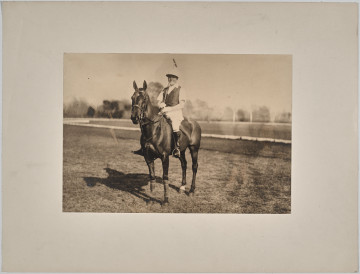
Koczyk Gdański
half of the 18th century
Castle Museum in Łańcut
Part of the collection: European classics of modernity
Leonard Pękalski was interested in monumental painting almost from the beginning of his artistic career. The artist was introduced into its arcana by Edward Trojanowski, a professor of the private School of Fine Arts in Warsaw, which Pękalski entered in 1913 thanks to the intercession and financial help of Leon Papieski, an advocate, publicist, collector of works of art and a donor of the Society for the Encouragement of Fine Arts. After finishing his studies, Pękalski was employed by his professor, who took the post of conservator of 15th-century Ruthenian frescoes at the Lublin Castle in 1919. In 1920, he took part in the Polish-Bolshevik war, after which he joined Felicjan Szczęsny Kowarski, one of the artists building the foundations of the Polish national culture in Toruń, newly incorporated into the country. There, together with his friend and Henryk Szczygliński and Henryk Nowina-Czerny, he ran the Graphic Arts Establishment Sztuka. When, in 1923, Kowarski received a studio of decorative painting at the Academy of Fine Arts in Kraków, Pękalski became his assistant. The easel paintings of both artists showed at that time an affinity with the conception of painting of Paul Cézanne, as well as with the post-Cubist tendencies of fading formalism. The intimate Szczecin composition, acquired from the collection of Pękalski's sister, belongs to this phase of his work. Simplified form and severity of the valor modelled solids, Ruthenian fresco colours based on a dominance of grey and blue with accents of yellow and red, as well as oneiric juxtaposition of motifs - a childlike model of a steamboat, a woman with an umbrella and a dove with an olive branch - create an aura of the uncanny close to the Italian pittura metafisica, similarly combining ancient art inspirations with modernity emblems.
Szymon Piotr Kubiak
Author / creator
Dimensions
cały obiekt: height: 60 cm, width: 65 cm
Object type
painting
Creation time / dating
Creation / finding place
Identification number
Location / status

half of the 18th century
Castle Museum in Łańcut

19th (?) century
Castle Museum in Łańcut

20th century
Castle Museum in Łańcut
DISCOVER this TOPIC
National Museum in Lublin
DISCOVER this PATH
Educational path